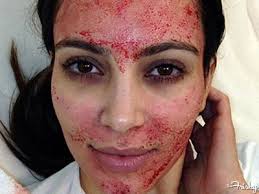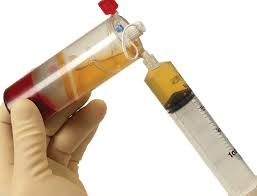
The basis of the blood behind the ‘blood facial’ is known as PRP or platelet-rich plasma. This is an extract from whole blood which creates a concentrate of platelets. Platelets are well known to have high levels of grow factors which play a major role in how humans heal their own wounds. PRP is far from new and has been used extensively in medicine in every area of surgery, from orthopedics to podiatry. It has been used in plastic surgery from facelifts to tummy tucks to complicated wounds. I have mixed it for years in with fat when doing fat injections as a theoretical boost to fa tcell survival and stem cell conversion. There are now a variety of kits from numerous manufactureres to proces and prepare PRP for injection.

While PRP is traditionally injected under the skin or mixed with other materials (e.g., fat) for injection, this is not how it was used in the Kim Kardashian story. In her case, it was dripped onto her face and then massaged ‘into’ her skin. While this sounds like it would be beneficial, this is a great example of what I call a ‘truism’. It is assumed to be true because it just seems like it should. It sounds so logical that how it not be true? While PRP injected under the skin may stimulate collagen formation, that does not necessarily mean it would stimulate collagen growth in the skin when appled to it on the outside. Quite frankly, there is exactly zero scientific evidence that PRP has any skin benefits at all when applied topically. Some call topical PRP use controversial, but that would be an understatement. And just because a celebrity had the treatment done does not give it any more scientific credibility. (it makes for great TV and publicity however)
PRP has more credible uses for facial rejuvenation such as the interestingly named Vampire Facelift. In this treatment, PRP is injected into the face in conjunction with collagen in a mixture known as Selphyl. It is purported to stimulate collagen growth and create a result that last up to two years after the injections. Patient results have been mixed but at least there is some theoretical science behind it…which is more than topical applied PRP can say.
Dr. Barry Eppley
Indianapolis, Indiana


